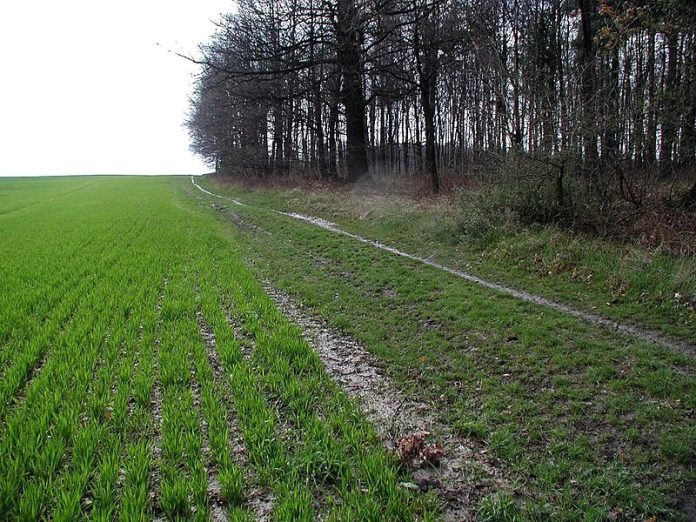The Soil Microbial Fuel Cells (SMFCs) use naturally occurring bacteria in the soil to generate electricity. As a long-term, decentralised source of renewable power, the SMFCs could be perpetually deployed for real-time monitoring of various environmental conditions and can also contribute to the growth of precision farming and smart cities. However, despite being in existence for over a century, the practical application of SMFCs has been nearly non-existent due to inconsistency in power output. Currently, there is no SMFC that can generate electricity consistently outside high moisture watery conditions. In a recent study, the researchers created and compared different design versions and found that the vertical cell design improves performance and makes SMFCs more resilient to changes in soil moisture.
Microbial fuel cells (MFCs) are bioreactors that produce electricity by converting the energy in the chemical bonds of organic compounds into electrical energy through biocatalysis by microbes. The electrons released in the anode compartment by bacterial oxidation of substrate are transferred to cathode where they combine with oxygen and hydrogen ions.
The biochemical reactions under aerobic condition, for example, for acetate as substrate are:
oxidation half-reaction on the anode
CH3COO− +3H2O → CO2 +HCO3− +8H+ +8e−
reduction half-reaction on cathode
2 O 2 + 8 H + + 8 e − → 4 H 2 O
In anaerobic environment, MFCs can use biowaste as substrate to produce electricity.
MFCs have potential to serve as a solution to environmental issues of sustainable energy, global warming and biowaste management. It has a solid case for application in areas where regular chemical batteries and solar panels fall short of expectation such as in green infrastructures, grasslands, wetlands, or underground. In these areas, solar panels do not work in night and usually get covered by dirt or vegetations while constituents of chemical batteries leach into the environment. The Soil Microbial Fuel Cells (SMFCs) come as a sustainable source of energy in such areas in farming, grassland, forest and wasteland to power low energy devices.
The Soil Microbial Fuel Cells (SMFCs) use naturally occurring bacteria in the soil to generate electricity. Under optimal conditions, SMFCs can produce up to 200 μW of power with a voltage of 731 mV. As a long-term, decentralised source of renewable power, the SMFCs could be perpetually deployed for real-time monitoring of various environmental conditions and guide policy. These can also contribute to the growth of smart cities and farms.
However, despite being in existence for over a century, the practical application of SMFCs at ground level has been very limited. Currently, there is no SMFC that can generate electricity consistently outside high moisture watery conditions. The inconsistency in power output is attributed to differences in environmental conditions, soil moisture, types of soil, microbes inhabiting the soil etc. but changes in soil moisture has maximum bearing on consistency of power output. The cells need to remain adequately hydrated and oxygenated for consistent power output which may be a difficult issue when buried underground in dry dirt.
The vertical cell design improves performance and makes SMFCs more resilient to changes in soil moisture.
A recent study (involving a 2-year-long iterative design process with a combined nine months of SMFC deployment data) has systematically tested cell designs to arrive at general design guidelines. The research team created and compared four different versions including the traditional design in which both cathode and anode are parallel to each other. The vertical design (version 3: anode orientation horizontal & cathode orientation perpendicular) of the fuel cell was found to be the best performing. It worked well in in the moisture range of inundated condition to somewhat dry condition.
In vertical design, the anode (made of carbon to capture the electrons released by the bacteria) is buried in the moist soil perpendicular to the ground’s surface while the cathode (made of an inert, conductive metal) sits vertically atop the anode horizontally at ground level where oxygen is readily available for completion of reduction half reaction.
The power output for design was significantly higher throughout the duration when the cell was inundated with water. It operated well from completely underwater condition to somewhat dry (41% water by volume) however it still had high 41% volumetric water content (VWC) requirement to remain active.
This study addresses question regarding design aspect of SMFCs towards improving consistency and resilience to moisture changes. Since the authors have released all designs, tutorials and simulation tools to the public to use and build upon, hopefully, this should translate to wider applications in diverse areas such as in precision farming in near future.
***
References:
- Vishwanathan A.S., 2021. Microbial fuel cells: a comprehensive review for beginners. 3 Biotech. 2021 May; 11(5): 248. Published online 01 May 2021. DOI: https://doi.org/10.1007/s13205-021-02802-y
- Ten B., et al 2024. Soil-Powered Computing: The Engineer’s Guide to Practical Soil Microbial Fuel Cell Design. Published:12 January 2024. Proceedings of the ACM on Interactive, Mobile, Wearable and Ubiquitous Technologies. Volume 7 Issue 4Article No.: 196pp 1–40. DOI: https://doi.org/10.1145/3631410
- Northwestern University. News-Dirt-powered fuel cell runs forever. Posted on 12 January 2024. Available at https://news.northwestern.edu/stories/2024/01/dirt-powered-fuel-cell-runs-forever/
***






































